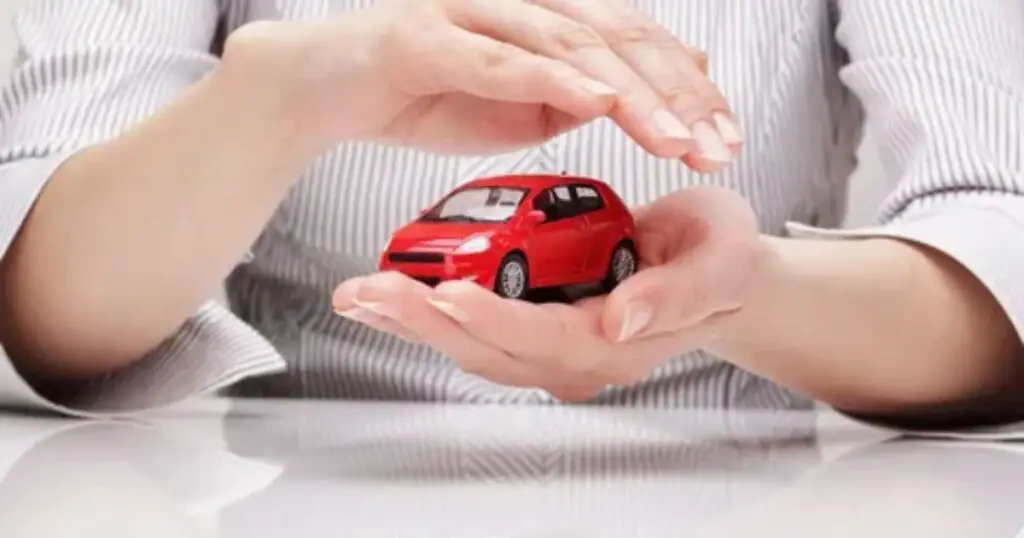Car insurance is an essential part of owning and driving a vehicle. It provides financial protection in case of accidents, theft, or other damages. Understanding how car insurance works can help you make informed decisions when selecting a policy that meets your needs.
This article will explain the various aspects of car insurance, including types of coverage, how premiums are calculated, and what to do in the event of an accident. By the end of this guide, you’ll have a comprehensive understanding of car insurance and be better equipped to navigate the complexities of choosing the right policy.
An understanding of how car insurance works, from choosing the right coverage to navigating the claims process, is essential for protecting yourself financially. Calculating car insurance premiums is a complex process involving assessing various risk factors. Insurance companies use a range of criteria to determine how much you’ll pay for your policy.
The Basics of Car Insurance
The concept of car insurance revolves around the idea of risk management. When you purchase a car insurance policy, you are essentially entering into a contract with an insurance company. The insurer agrees to cover specific financial losses that may arise from accidents, theft, or other incidents involving your vehicle.
In exchange, you pay a premium, which is typically a monthly or annual fee. The amount of coverage and the cost of your premium depend on various factors, such as the type of coverage you choose, your driving history, and the make and model of your car.
Types of Car Insurance Coverage
It’s important to understand the different types of car insurance coverage available. Each type of coverage protects you in different ways:
- Liability Insurance: Covers damages to others if you are at fault in an accident.
- Collision Insurance: Pays for damages to your vehicle in case of an accident, regardless of fault.
- Comprehensive Insurance: Covers non-collision-related damages, such as theft, vandalism, or natural disasters.
- Uninsured/Underinsured Motorist Coverage: Protects you if you’re involved in an accident with a driver who has insufficient or no insurance.
- Personal Injury Protection (PIP): Covers medical expenses and lost wages for you and your passengers after an accident.
Each type of coverage offers different levels of protection, and it’s essential to consider your specific needs and circumstances when choosing the right combination of coverages for your policy.
How Are Car Insurance Premiums Calculated?

Calculating car insurance premiums is a complex process involving assessing various risk factors. Insurance companies use a range of criteria to determine how much you’ll pay for your policy. Some of the key factors include:
- Driving Record: A clean driving record typically results in lower premiums, while accidents or traffic violations can increase your costs.
- Age and Gender: Younger drivers, especially males, often face higher premiums due to higher accident rates.
- Location: Urban areas with higher traffic and crime rates may lead to higher premiums compared to rural areas.
- Vehicle Type: The make, model, and age of your car can affect your premium. Expensive or high-performance vehicles often cost more to insure.
- Credit Score: In some regions, your credit score can impact your insurance premium, with higher scores potentially leading to lower rates.
- Coverage Limits: Higher coverage limits generally result in higher premiums.
It’s essential to shop around and compare quotes from different insurers, as rates can vary significantly depending on the company’s assessment of your risk profile.
What to Do After An Accident
The aftermath of a car accident can be stressful, but knowing what steps to take can help you manage the situation effectively. Here are some key actions to take immediately after an accident. The first priority is to check for injuries and ensure everyone is safe. Move vehicles out of traffic if possible and turn on hazard lights. Reporting the accident to the police is crucial, especially if there are injuries or significant damage. A police report can be valuable when filing an insurance claim.
Collect the names, contact information, insurance details, and license plate numbers of all parties involved in the accident. Take photos of the accident scene, including damage to all vehicles, road conditions, and any visible injuries. This documentation can be helpful for insurance claims. Contact your insurer as soon as possible to report the accident and begin the claims process. Provide them with all the necessary information and documentation.
The Claims Process Explained
Filing a car insurance claim involves several steps. Understanding the process can help you navigate it more smoothly:
- Initial Report: Notify your insurance company about the accident. Provide them with details such as the date, time, location, and circumstances of the incident.
- Assessment: An insurance adjuster will investigate the claim, which may involve reviewing the police report, interviewing witnesses, and inspecting the damage to your vehicle.
- Repair Estimates: You may be asked to obtain repair estimates from authorized repair shops. The insurance company will review these estimates before approving the repairs.
- Settlement: Once the claim is approved, the insurer will either pay the repair costs directly or reimburse you for the expenses, depending on your policy terms.
- Dispute Resolution: If you disagree with the insurance company’s assessment or settlement offer, you may have the option to negotiate or seek mediation.
The Importance of Maintaining Good Coverage
It’s tempting to choose the cheapest car insurance policy available, but it’s important to consider the potential consequences of inadequate coverage. Insufficient coverage can leave you vulnerable to significant financial losses in the event of an accident.
For example, if your liability coverage limits are too low, you could be personally responsible for paying out-of-pocket for damages that exceed your policy limits. Additionally, without comprehensive or collision coverage, you may be on the hook for repairing or replacing your vehicle after an accident or theft.
Common Mistakes to Avoid
When it comes to car insurance, there are several common mistakes that can lead to higher premiums or inadequate coverage. Here are some pitfalls to watch out for:
- Choosing Minimum Coverage: Opting for the minimum required coverage may save money upfront, but it can be costly if you’re involved in a serious accident.
- Failing to Compare Rates: Insurance premiums can vary widely between companies, so it’s essential to shop around and compare quotes.
- Overlooking Discounts: Many insurers offer discounts for safe driving, bundling policies, or installing anti-theft devices. Make sure to ask about available discounts.
- Not Updating Your Policy: If your circumstances change, such as moving to a new location or purchasing a different vehicle, be sure to update your policy accordingly.
How to Lower Your Car Insurance Premium

If you’re looking to reduce your car insurance costs, there are several strategies you can employ. Raising your deductible can lower your premium, but be sure you can afford to pay the higher deductible in case of a claim. Many insurance companies offer discounts if you bundle your car insurance with other policies, such as homeowners or renters insurance.
Safe driving can lead to lower premiums over time, as insurers reward drivers with clean records. Inquire about discounts for things like good grades (for students), safe driving courses, or being a member of certain organizations. Some insurers offer usage-based policies that track your driving habits and adjust premiums based on how and when you drive.
The Role of Deductibles and Limits
Understanding deductibles and coverage limits is crucial for selecting the right car insurance policy. A deductible is the amount you must pay out-of-pocket before your insurance coverage kicks in. Higher deductibles usually mean lower premiums, but you’ll need to pay more in case of a claim.
Coverage limits, on the other hand, determine the maximum amount your insurance company will pay for a covered loss. It’s important to choose limits that adequately protect your assets, especially in the case of liability coverage.
Frequently Asked Questions
What is the difference between liability and comprehensive coverage?
Liability coverage pays for damages to others if you are at fault in an accident, while comprehensive coverage pays for non-collision-related damages, such as theft or natural disasters.
Can I change my car insurance coverage at any time?
Yes, you can adjust your car insurance coverage at any time. It’s important to review your policy regularly and make changes if your circumstances change.
How do I know if I need uninsured motorist coverage?
Uninsured motorist coverage is recommended if you live in an area with a high number of uninsured drivers. It provides protection if you’re involved in an accident with a driver who has no insurance.
What should I do if my car is stolen?
If your car is stolen, report the theft to the police immediately and contact your insurance company to file a claim. Comprehensive coverage typically covers vehicle theft.
Conclusion
Car insurance is a vital component of responsible vehicle ownership. An understanding of how car insurance works, from choosing the right coverage to navigating the claims process, is essential for protecting yourself financially. By considering factors such as coverage types, premium calculations, and common pitfalls, you can make informed decisions that suit your needs.
Always remember that while it may be tempting to cut costs, adequate coverage is key to ensuring peace of mind on the road. Whether you’re a new driver or a seasoned car owner, taking the time to review and understand your car insurance policy can save you both time and money in the long run.

Daniel, a seasoned author with 8 years of expertise in SEO, brings a delectable blend of culinary flair and digital finesse to the food niche on his website.



